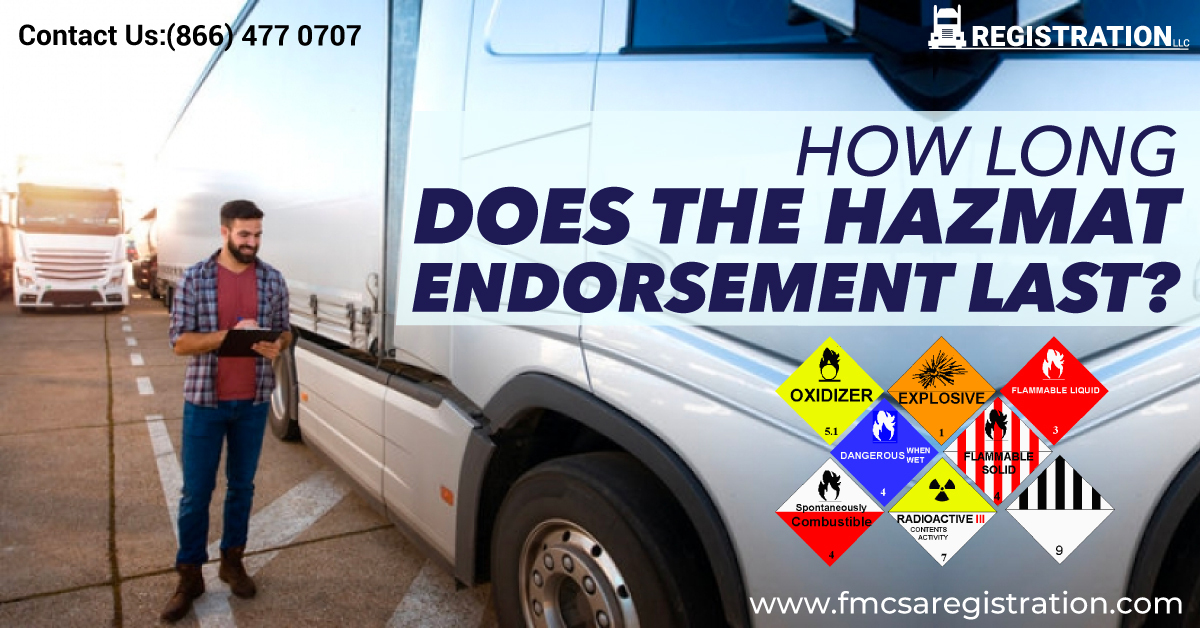

As a commercial truck driver, you are aware of the significance of the Hazardous Materials (HazMat) endorsement. It opens up opportunities to transport a broader range of goods, boosting your career and income. So the question that often arises is, This article will provide a comprehensive response to that question and delve deeper into the intricacies of the HazMat endorsement.
Understanding The HazMat Endorsement
First, let's set the stage by understanding what the HazMat endorsement is and why it's crucial. The HazMat endorsement is a special certification added to your Commercial Driver's License (CDL) permitting you to transport hazardous materials. As these materials can pose a risk to public safety and the environment, the endorsement reflects your training, knowledge, and competency to handle such shipments responsibly.
The Life Span of A HazMat Endorsement
Now, let's address the important inquiry - "What is the duration of a HazMat endorsement?" - The endorsement itself does not have a separate expiration but is connected to the validity of your CDL. In the majority of states, a commercial driver's license remains valid for a period of five years. Visit & learn about CDL Restrictions. Consequently, your HazMat endorsement generally lasts for the same duration as your CDL, which is approximately five years. Nevertheless, it is important to note that the renewal procedure for your HazMat endorsement is distinct, and here's the reason behind it.
HazMat Endorsement Renewal Process
Although your HazMat endorsement technically lasts as long as your CDL, the renewal process is slightly different. What Is a Hazmat Endorsement? Federal law requires that you go through a security threat assessment (STA) every five years or, in some cases, even earlier. Hazmat and Tanker Endorsement. This assessment is a rigorous screening process conducted by the Transportation Security Administration (TSA) that helps ensure that hazardous materials are transported by drivers who don't pose a security risk.
Even though your CDL and the HazMat endorsement attached to it might still be valid according to their issue dates, the Department of Homeland Security can invalidate your HazMat endorsement if you do not complete your STA successfully. Visit & learn about UCR filing. Hence, it is recommended that you initiate the STA renewal process at least 90 days before your current STA expires to avoid potential endorsement suspension due to administrative delays.
The Importance of The Renewal Process
"Why is the renewal process so important?" you might ask. 9 Hazmat Classes. The TSA threat assessment is integral to maintaining national security. With the possibility of hazardous materials being used maliciously, it's vital that the individuals transporting them are reliable and do not pose a security risk. Therefore, the renewal process is as crucial as the initial certification process. This cycle ensures that only vetted individuals maintain the ability to transport hazardous materials, thereby protecting public safety and environmental health.
Recertification: A Path To Maintain Your HazMat Endorsement
To keep your HazMat endorsement active, you must undertake a recertification process. This usually involves retaking the HazMat knowledge test. "What is this recertification process about?" you might be wondering.
The recertification process reinforces your understanding of the safety measures, protocols, and regulations surrounding the transportation of hazardous materials. As laws and regulations often change, this periodic recertification ensures that you stay updated with the latest industry standards, enhancing your competency and safety as a HazMat-certified driver.
Preparing For The Recertification Process
Getting ready for the recertification process frequently raises the question, "What does the preparation involve?" Generally, it encompasses a thorough examination of the regulations and guidelines related to the transportation of hazardous materials. Numerous sources, such as the Commercial Driver's Manual offered by your state's Department of Motor Vehicles (DMV) and study materials from reputable driving schools, can assist you in your preparation.
Remember, regulations may change over time, so it is crucial to stay current with the most recent versions of these resources.
It's also advisable to engage in practical training or refreshers if available. This hands-on approach can be especially beneficial for the skill-oriented components of the certification. Essentially, your preparation should reacquaint you with the knowledge and competencies that allowed you to gain the HazMat endorsement initially.
Understanding HazMat Endorsement Costs
Cost is an important factor to consider when discussing the HazMat endorsement. Each renewal comes with its associated costs. For example, the TSA security threat assessment requires a fee which, as of 2022, was $86.50.
There may also be additional charges for the fingerprinting process required for the assessment. The cost for retaking the HazMat knowledge test can vary by state, so check with your local DMV for accurate information. While these costs may seem daunting, it is essential to view them as an investment in your career progression and longevity.
Navigating Potential Renewal Challenges
The renewal process may not always be straightforward. The security threat assessment can present challenges if you've had changes in your criminal or immigration status. It's important to address any potential obstacles early in the renewal process to prevent delays or complications. In some cases, you may need to seek legal advice to navigate these challenges.
Why Keep Your HazMat Endorsement Current?
Keeping your HazMat endorsement current might seem like a lot of work, but it is worth it. A valid HazMat endorsement expands your job opportunities and potentially your earnings. By staying updated, you ensure continuous employment without disruptions due to expired endorsements. Moreover, you remain part of an essential workforce that ensures the safe and efficient transport of hazardous materials.
Final Thoughts